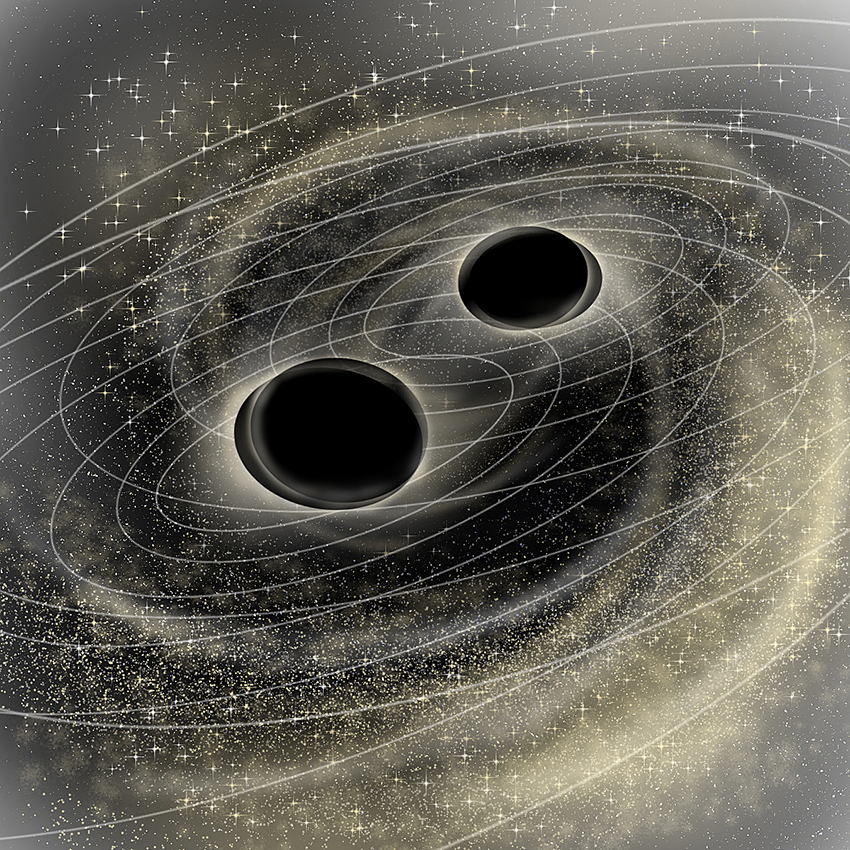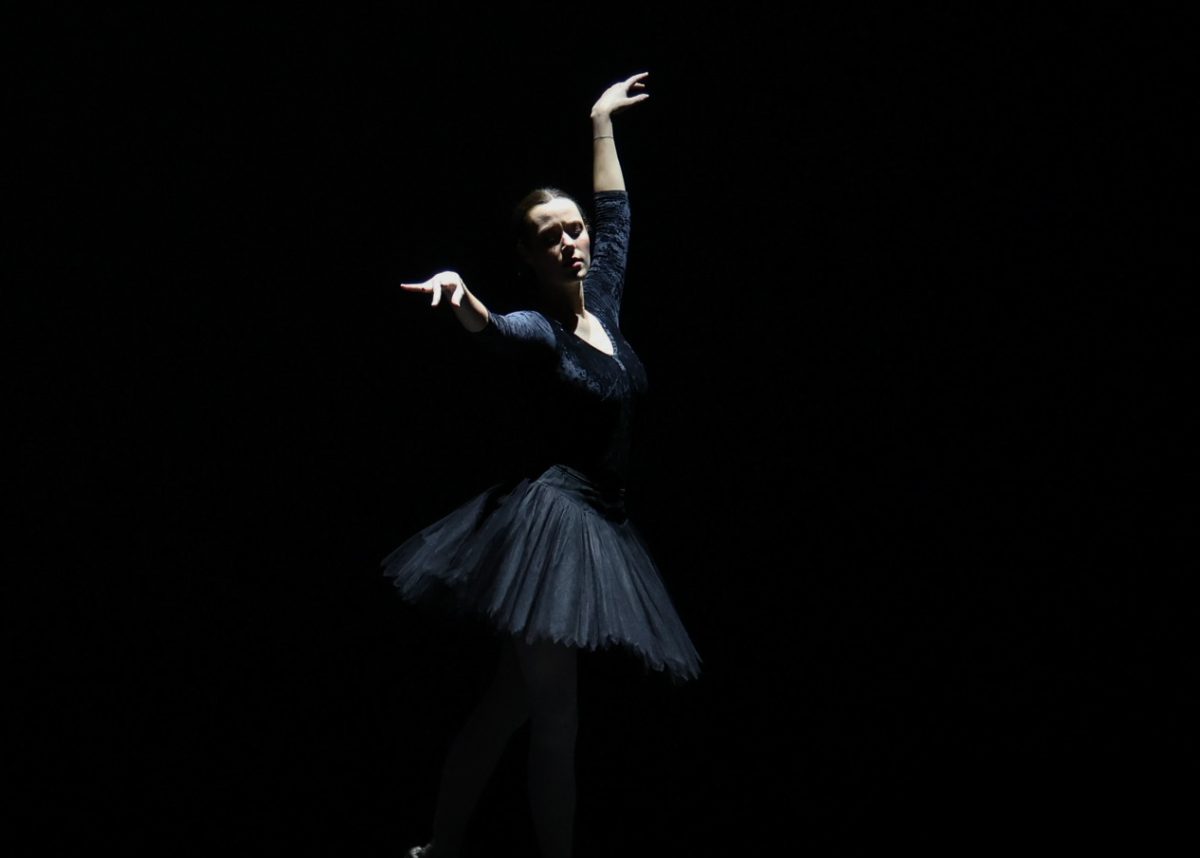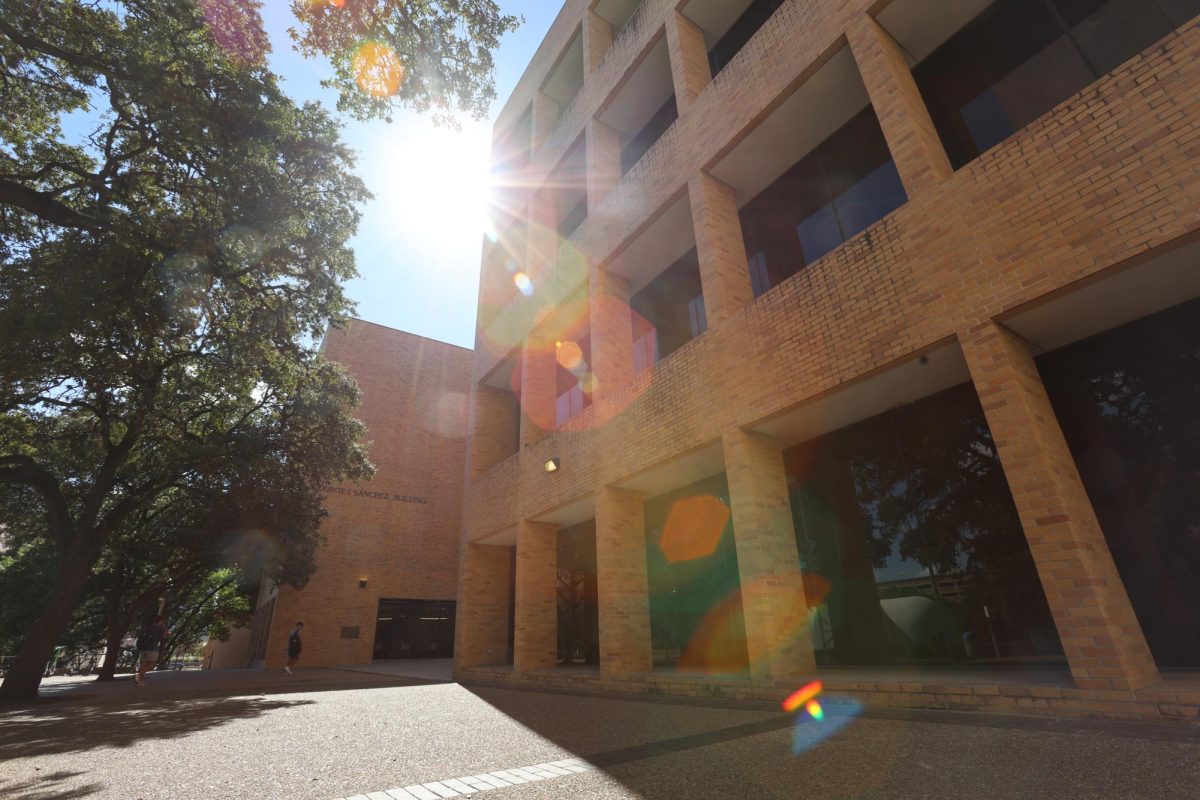UT alumnus David Reitze led the first direct detection of gravitational waves, 100 years after Albert Einstein predicted them in his general relativity theory.
On Sept. 14 of last year, Reitze and his team recorded gravitational-wave signals emitted 1.3 billion years ago by the merging of two black holes, each about 30 times the mass of the sun. This discovery confirmed the existence of gravitational waves, which Einstein predicted in 1916. The paper was published in the journal Physical Review Letters on Feb. 11.
“Last night [our team] toasted with champagne, but everybody was actually eager to come back to work to find more black holes,” Reitze said.
Reitze is the executive director of the Laser Interferometer Gravitational-Wave Observatory (LIGO), a research laboratory designed and operated by the California Institute of Technology and the Massachusetts Institute of Technology with funding from the National Science Foundation. He received his Ph.D. in physics at UT-Austin in 1990.
Physics professor Michael Downer, who supervised Reitze’s dissertation, said Reitze’s team improved the sensitivity of the LIGO detectors until they could detect gravitational waves. Gravitational waves are tiny, rhythmic distortions in space and time that occur when objects move. They are generated all the time; for example, a person generates a weak gravitational wave when they spin in a chair, according to Downer.
Humans can only observe and measure the gravitational waves of large, violent motions. Downer said even though the black holes were billions of light years away, scientists could detect their gravitational waves because of the magnitude of the collision.
“Basically, what they have developed in the past three to four decades is a sort of optical microphone that is able to listen to very low level gravitational signals from across the universe that Einstein predicted to exist, just over a hundred years ago,” Downer said.
Downer said he was happy to learn about his former graduate student’s major contribution to the scientific world.
“[The discovery] was something that scientists have been anticipating for decades — it was a chest-pumping moment to see major results finally come out of this project that has been funded by the taxpayers for 40 years,” Downer said.
Downer said Reitze bleeds orange and plans to visit the 40 Acres.
“I still have a very close connection with my thesis advisor, Dr. Michael Downer,” Reitze said. “I just communicated with him this morning, and he invited me to come to Austin, so I’m sure I’ll be down there sometime.”
Reitze said he followed in the footsteps of fellow Longhorns who had gone before him in researching general relativity. In 1963, physics professor Roy Kerr discovered the Kerr metric, a solution to an Einstein equation which explains how spacetime works in general relativity. It helps scientists understand how black holes spin.
“UT-Austin has a rich history of research in general relativity,” Reitze said. “[Kerr’s] calculation was really a revolution, because for the first time he was able to incorporate spin — angular momentum — into black holes.”
Reitze said he confirmed Kerr’s equation when the LIGO team found a component of angular momentum in the final version of the collided, merged black hole.
Richard Matzner, physics professor and faculty member of the UT Relativity Group, said every detail of this first direct detection of gravitational waves matches Einstein’s description of gravity.
“This is the first definitive observation of the existence of black holes, the first definitive observation of the collision of black holes and the first definitive observation of a spinning black hole,” Matzner said. “Every piece of that behaves in the way Einstein predicted it would.”
Matzner, in a previous 2005–2010 collaboration with LIGO, predicted the potential emission of gravitational wave signals when two black holes merge. He said Reitze’s discovery marks the birth of a new scientific era in astronomy.
“We should expect to have lots more observations of signals in the not-too-distant future,” Matzner said. “This is actually going to be a new branch of astronomy.”
Reitze said he plans to improve the LIGO detectors’ reliability and sensitivity to further investigate gravitational waves and black holes. In July or August, his team plans to start a second run of experiment.
“Last month we took our detectors offline — we stopped searching for gravitational waves and we’re making a series of improvements to the detectors,” Reitze said. “I’m optimistic that we’ll see a lot more gravitational waves.”
Matzner said he thinks Einstein would be proud of UT’s physicists.
“I’m sure [Einstein] is very happy that we’re still working on [general relativity and gravity] and that so far he’s been right,” Matzner said. “We haven’t found any instances where there is anything wrong with what he predicted.”
Jennifer Tisdale, director of public affairs at the Harry Ransom Center, said the University acquired Einstein’s gravitational waves manuscript in 1973.
To celebrate this discovery, Tisdale said the Ransom Center will temporarily display several pages of this manuscript until Feb. 29, and that the full manuscript is available online.
Physics sophomore Bailey Kroll spent three hours on Friday afternoon looking through Einstein’s manuscript at the Harry Ransom Center after learning about the recent discovery.
“I just think it is so wonderful that UT has such an expansive collection,” Kroll said. “[As] a physics major, generally I’m not one to go to the Ransom Center for fun, but today was honestly one of the most enjoyable days I’ve ever had.”
Kroll said she is both excited and humbled by this discovery and the future possibilities it brings forth.
“Our whole lives, and for the history of humanity, we only saw the universe in electromagnetic waves, [but] now we have a new way of observing the universe,” Kroll said. “What are the odds that … before humans existed, these two black holes collided, emitting powerful gravitational waves, and in the time it took them to travel to earth, we managed to evolve as a species and evolve our technology to be able to detect this distant echo of a collision? That, to me, is beautiful. It’s moments like this that inspire me to become a scientist.”





















